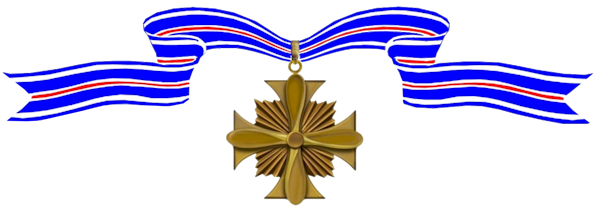William Shomo attended the Cincinnati College of Embalming and the Pittsburgh School of Embalming between 1937 and 1940, and then he worked as a mortician for a short time before enlisting in the Aviation Cadet Program of the U.S. Army Air Forces. During World War II he flew 203 combat missions, was credited with the destruction of 8 enemy aircraft in aerial combat plus an additional 19 on the ground while strafing Japanese airfields, and was awarded the Medal of Honor for destroying 7 enemy aircraft during one combat mission on January 11, 1945. After the war he transferred to the new U.S. Air Force, and retired in 1968 as a Lieutenant Colonel.

–
Cemetery:
Awards Received
-

Medal of Honor
-
Medal of Honor
Service:
United States Army Air ForcesRank:
Major (Air Corps), [then Captain]Batallion:
82d Tactical Reconnaissance SquadronRegiment:
71st Reconnaissance Group, 308th Bombardment WingDivision:
5th Air ForceAction Date:
January 11, 1945
War Department, General Orders No. 25 (April 7, 1945), Amended by Department of the Army, General Orders No. 1 (1960)The President of the United States of America, in the name of Congress, takes pleasure in presenting the Medal of Honor to Major (Air Corps), [then Captain] William Arthur Shomo (ASN: 0-439677), United States Army Air Forces, for conspicuous gallantry and intrepidity at the risk of his life above and beyond the call of duty on 11 January 1945, while serving with the 82d Tactical Reconnaissance Squadron, 71st Reconnaissance Group, 308th Bombardment Wing, Fifth Air Force, over Luzon, Philippine Islands. Major Shomo was lead pilot of a flight of two fighter planes charged with an armed photographic and strafing mission against the Aparri and Laoag airdromes. While en route to the objective, he observed an enemy twin engine bomber, protected by 12 fighters, flying about 2,500 feet above him and in the opposite direction Although the odds were thirteen-to-two, Major Shomo immediately ordered an attack. Accompanied by his wingman he closed on the enemy formation in a climbing turn and scored hits on the leading plane of the third element, which exploded in midair. Major Shomo then attacked the second element from the left side of the formation and shot another fighter down in flames. When the enemy formed for Counterattack, Major Shomo moved to the other side of the formation and hit a third fighter which exploded and fell. Diving below the bomber he put a burst into its underside and it crashed and burned. Pulling up from this pass he encountered a fifth plane firing head on and destroyed it. He next dived upon the first element and shot down the lead plane; then diving to 300 feet in pursuit of another fighter he caught it with his initial burst and it crashed in flames. During this action his wingman had shot down three planes, while the three remaining enemy fighters had fled into a cloudbank and escaped. Major Shomo’s extraordinary gallantry and intrepidity in attacking such a far superior force and destroying seven enemy aircraft in one action is unparalleled in the southwest Pacific area.


